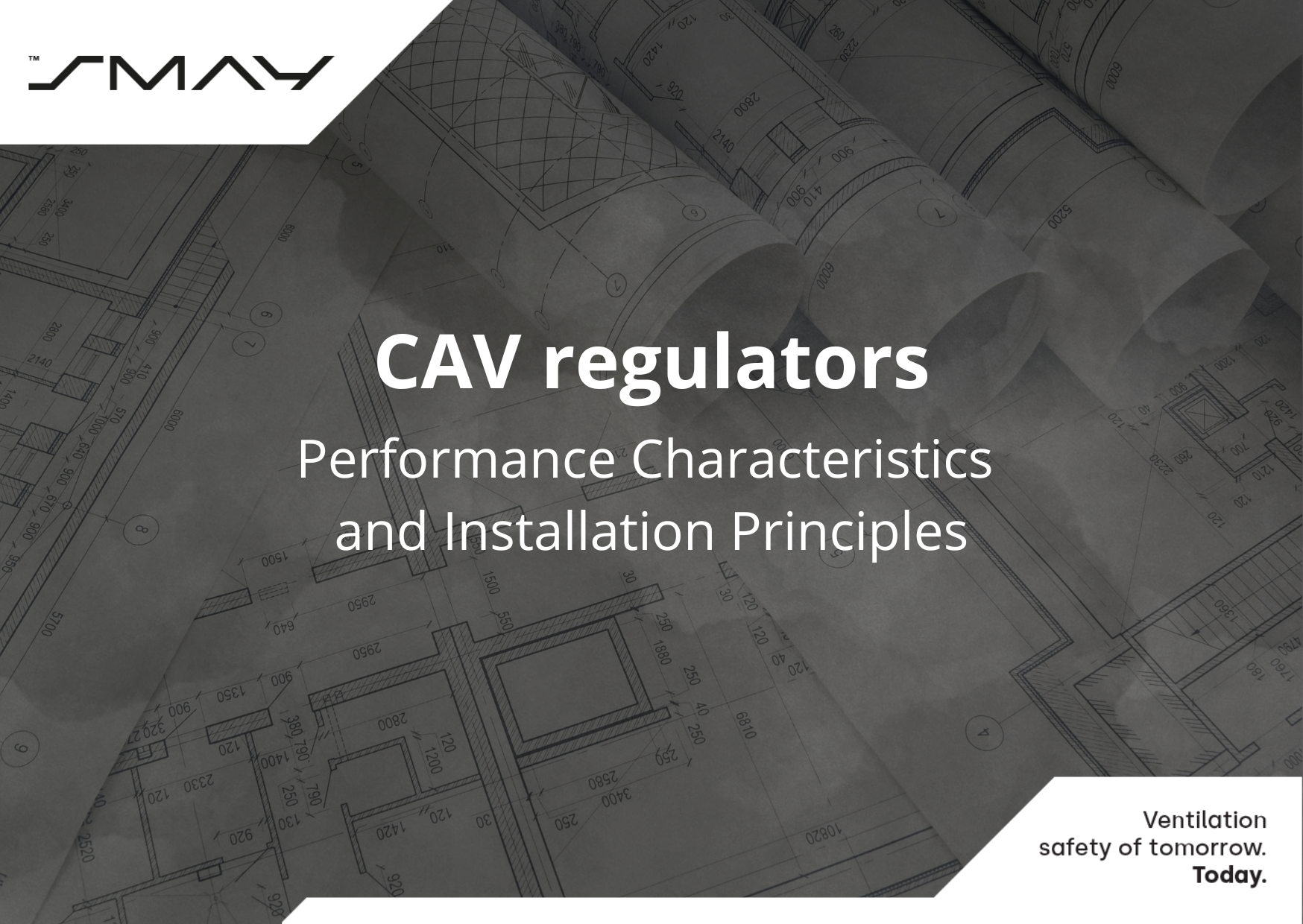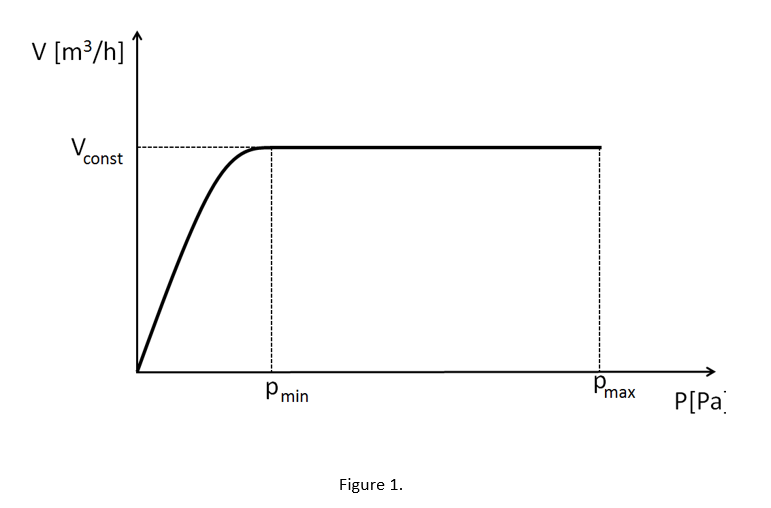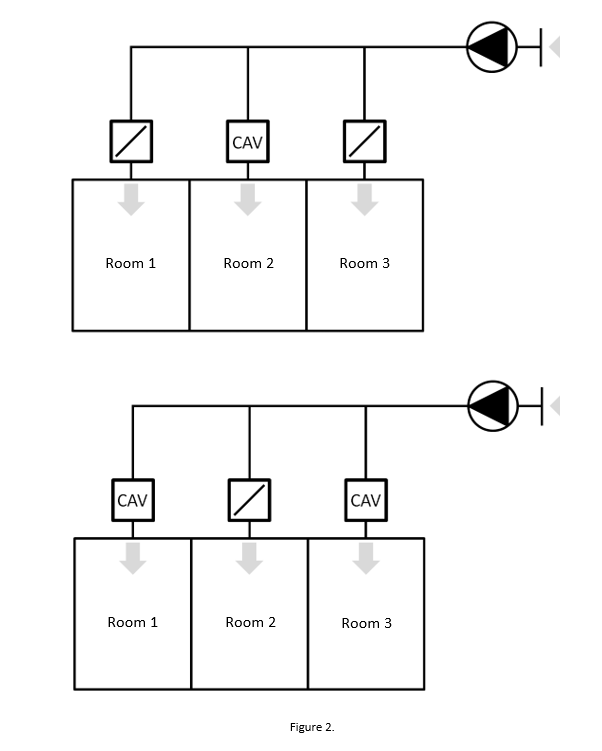CAV regulators – Performance Characteristics and Installation Principles

Is it possible to use constant air volume (CAV) regulators with air dampers? How is the performance of CAV regulators affected by installation? Those are only some of the issues that matter to designers of ventilation systems that are discussed in this article by Szymon Płonczyński, our expert in CAV and VAV systems here at SMAY.
Is it possible to use constant air volume (CAV) regulators with air dampers?
Yes. CAV regulators maintain constant airflow within a specific section of the ventilation system, independent from pressure fluctuations upstream and downstream of the regulator. This device works on the principle of limiting the airflow. As long as the airflow rate is less than the set point value (the actual operating differential pressure of the device is less than pmin), the regulator will remain fully open. When the pmin value is exceeded and continues to increase, the airflow rate will be constant, equal to the set point value. Figure 1 shows the performance characteristics of the constant air volume (CAV) regulator.

Author

Szymon Płonczyński
Expert in the field for CAV and VAV systems – SMAY
The proportion of CAV regulators in the installation compared to the dampers is immaterial. Change in the performance of any device will require adjustment at each damper, while the airflow at the regulator will remain constant. Figure 2 shows examples of the correct location of CAV regulator(s) in combination with air dampers.

Can CAV regulators be installed in series?
No. This is not possible since each device must maintain constant airflow within its own section of the system, and each change, whether upstream or downstream, will have an impact on its settings. If we install two CAV regulators one after another within a single section, only one of them – the one with lower airflow – will control the airflow. However, the one with the higher airflow will open to its maximum since the performance for which it has been set will not be reached. Only the device with the lower airflow will actually reduce the airflow.
Same airflow on both CAV regulators
If we set the same airflow for both CAV regulators, assuming less accuracy, one of them will be the one with lower airflow and the situation would be similar to that described above. With higher accuracy, each CAV regulator would attempt to complete its objective, which would have an adverse effect on their performance. A pulse from one CAV regulator would cause an airflow adjustment in the other CAV regulator. The interaction between them would be unstable.
Pressure reduction using a static damper
If the anticipated pressure drop exceeds the permissible maximum working pressure of the regulator, one may need to install a regular damper and a CAV/VAV regulator in series. The static damper would pre-reduce the pressure so that the pressure would exceed the permissible value at the regulator.



